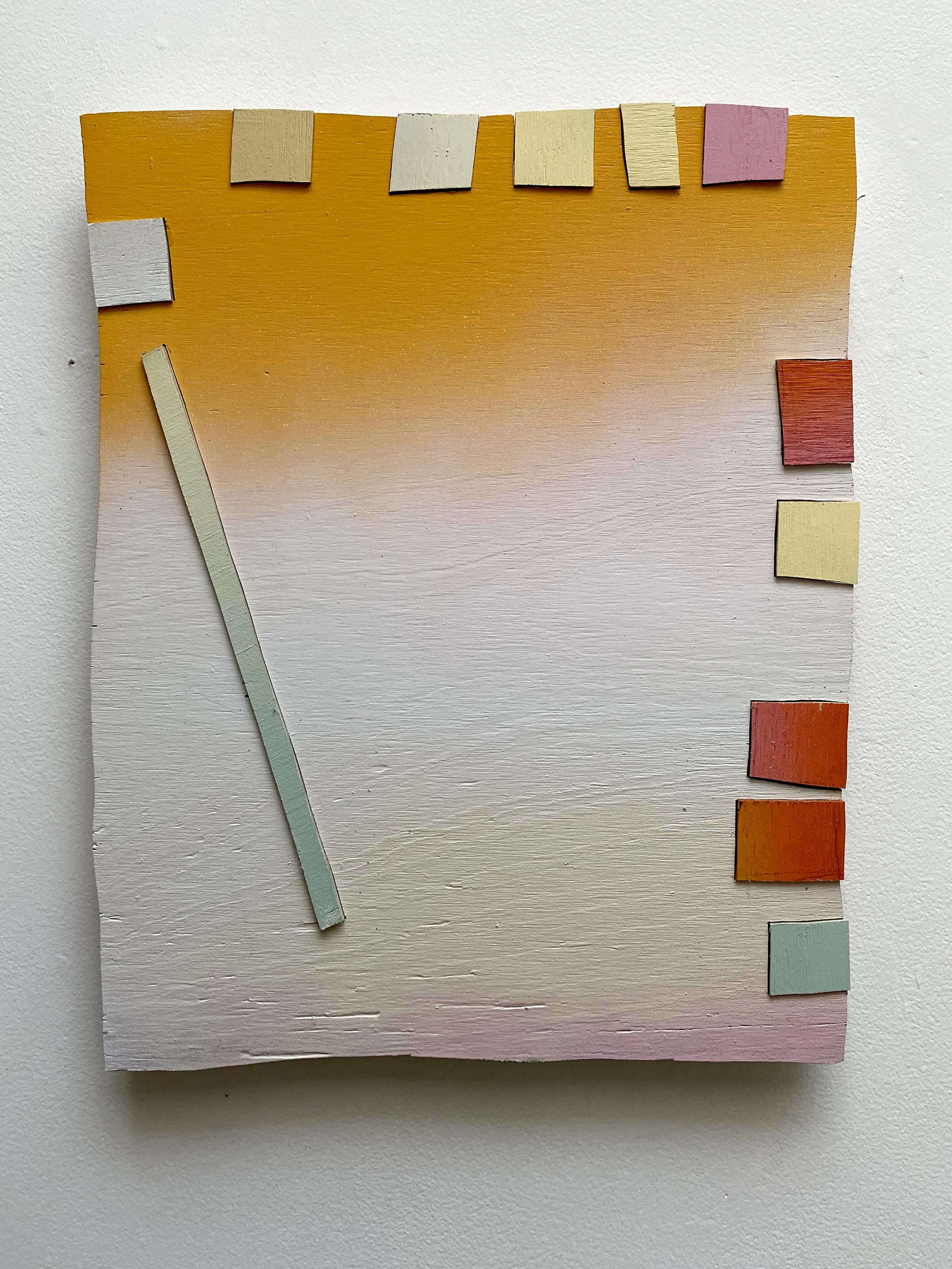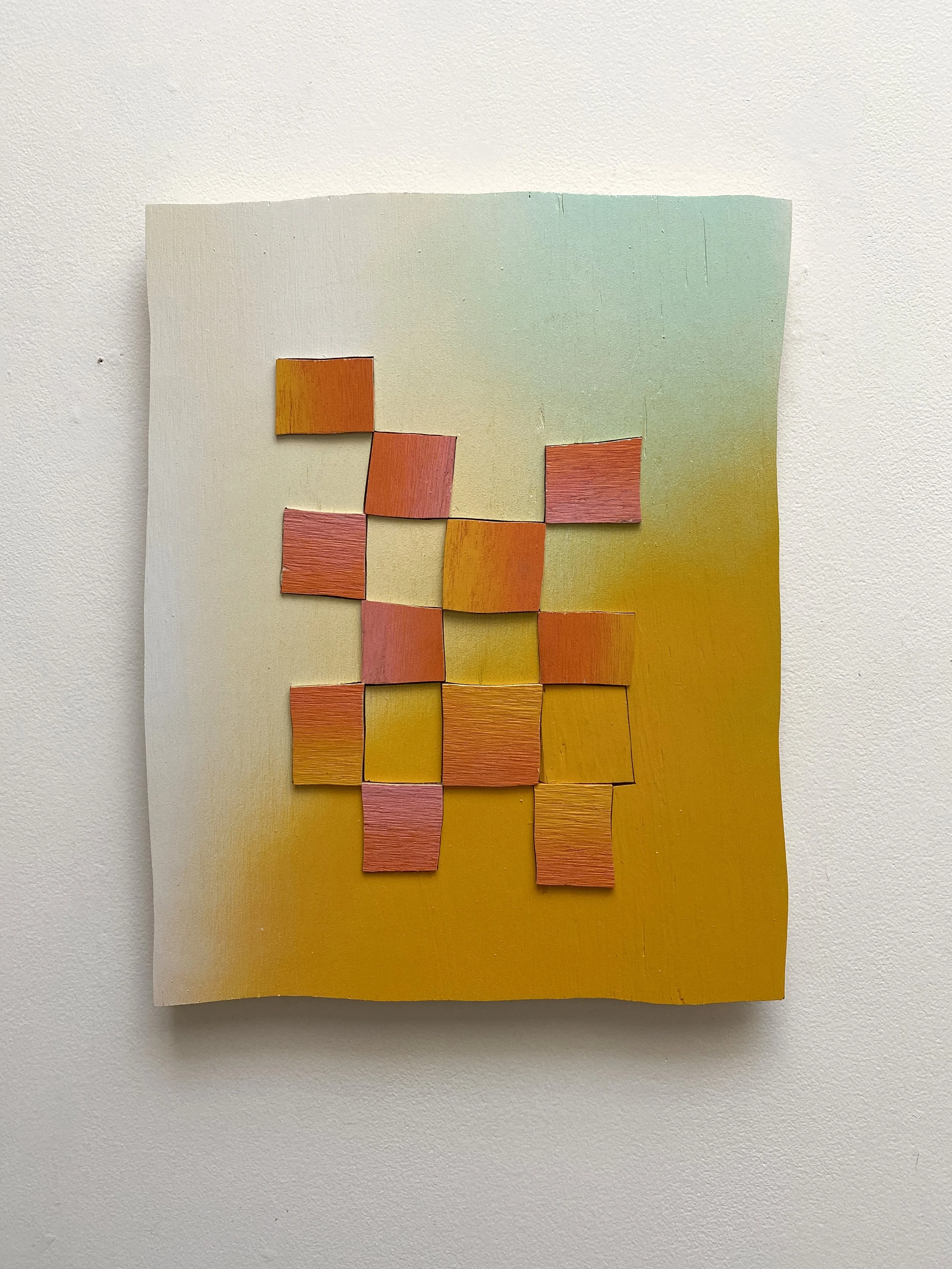
EDGE-Y
*
EDGE-Y *
In the weeks leading up to my time at 100W Corsicana, something shifted in my practice. It started accidentally—with a can of spray paint and a piece of blue plywood in my studio. I wasn’t looking to reinvent anything. In fact, I’d long avoided the seduction of gradients—their slick, airbrushed perfection felt too trendy, too smooth, too easy. Like the drip or the thick brushstroke, it’s a trope I knew too well. I’d resisted it because I found comfort in awkwardness. Frumpy shapes. Meandering lines. Color that shouts or hides. That’s more me.
But then I laid down a soft transition—a deep wine red fading into saturated blue—and something clicked. The airbrushed softness next to the hard, janky edge of the plywood felt fresh and unexpected. It wasn’t about following a trend anymore. It was about contrast, tension, and edge. About discovering something that felt true in that moment.
When I stepped into the 100W studio, I carried that moment with me. I came in with a new tool, a new way of thinking. Rothko and Frankenthaler came to mind—not in terms of scale or grandeur, but in how they played with the edge, with softness against structure. I started working quickly, intuitively, letting one decision push into the next. Then I’d slow down, rethink, undo, rebuild. There was a constant back-and-forth between control and chaos, between the familiar and the unknown.
What this residency gave me—beyond time and space—was freedom. I got to chase a new direction without overthinking it. I made some bad paintings. I made some good ones. But every one taught me something about color, surface, tension, and risk. There’s a kind of energy you can only access when you’re removed from your routine, when you’re living with the work in a quiet space where time stretches out a bit.
I left Corsicana with a deeper understanding of my materials and a renewed sense of curiosity. I was still figuring out what those new edges meant, how far they’d take me—but I wasn’t afraid of them anymore. The siren song of the gradient no longer felt like a trap. It became a tool. One more way to talk about the strange, layered language I’d been building all along.








